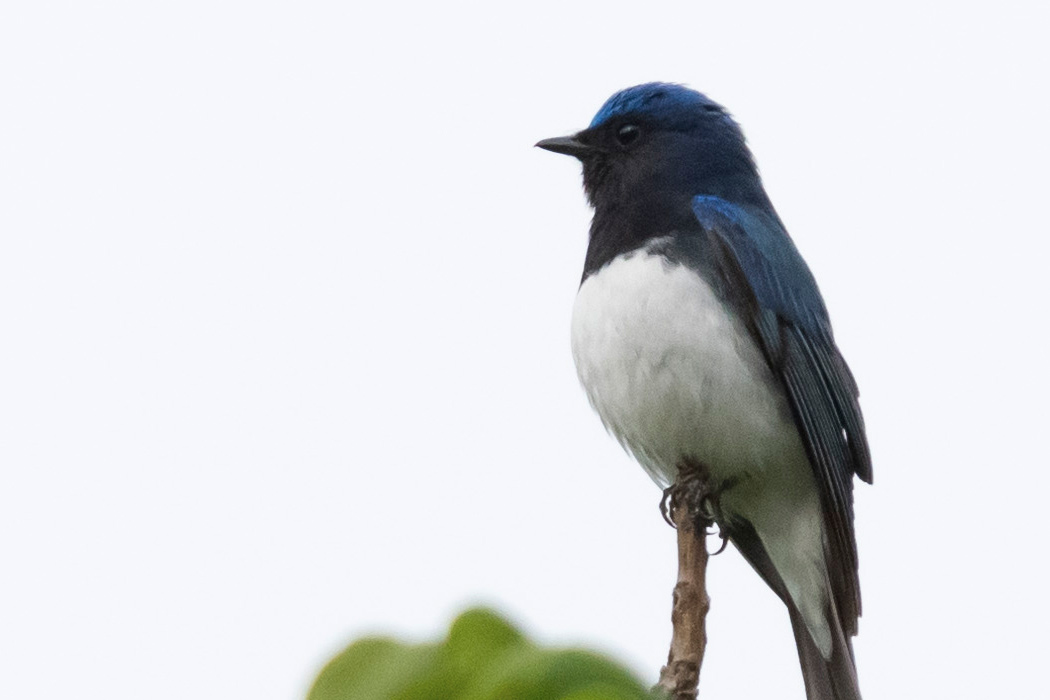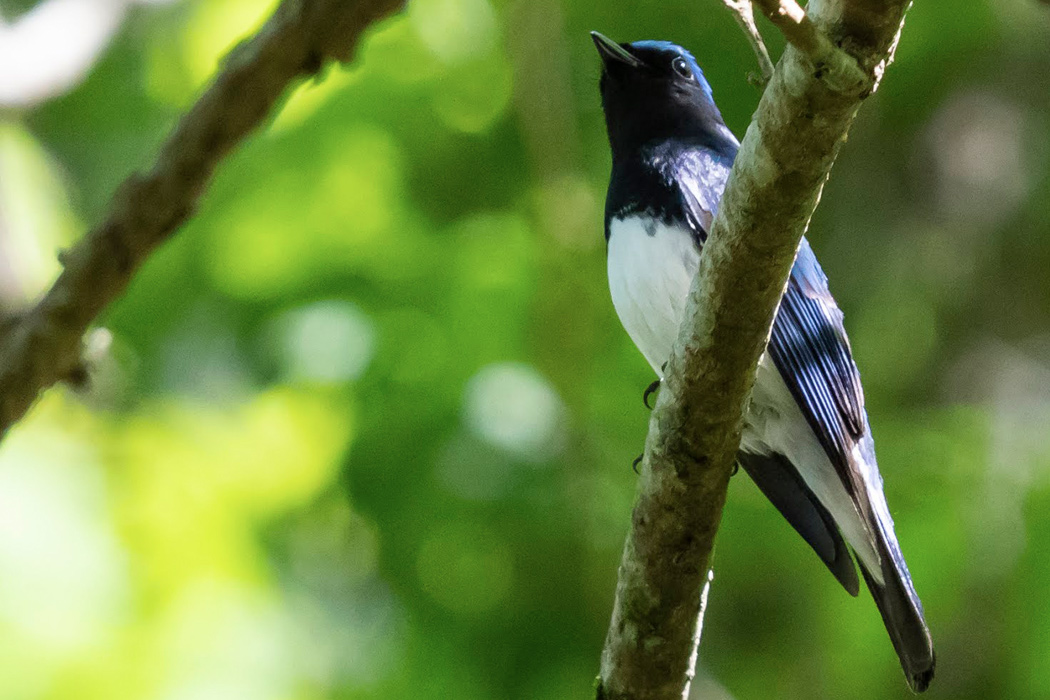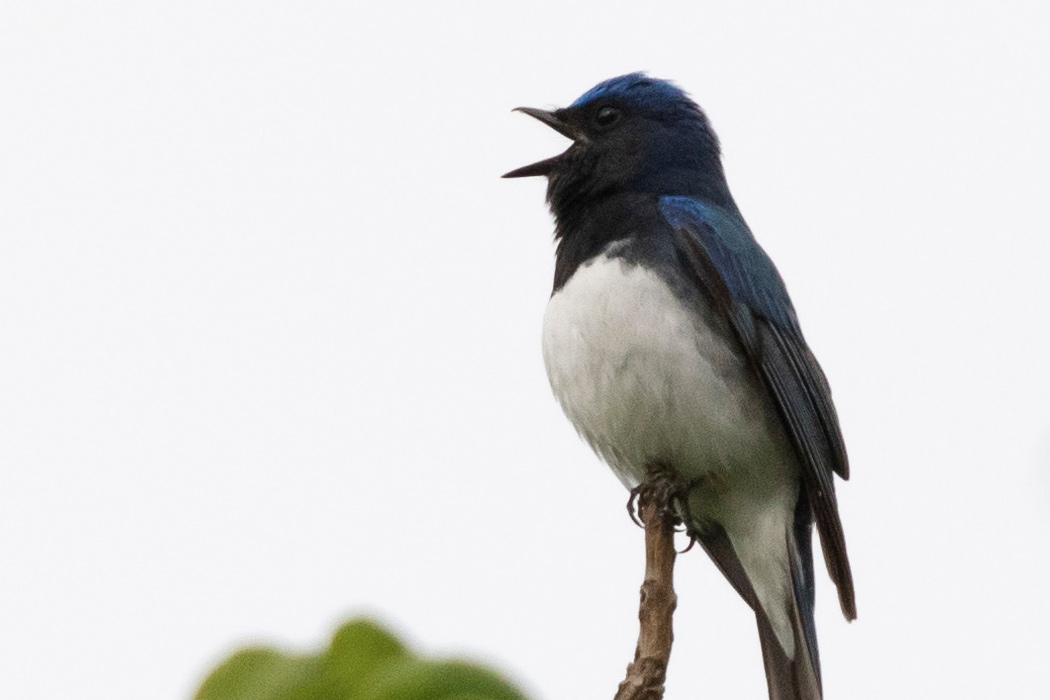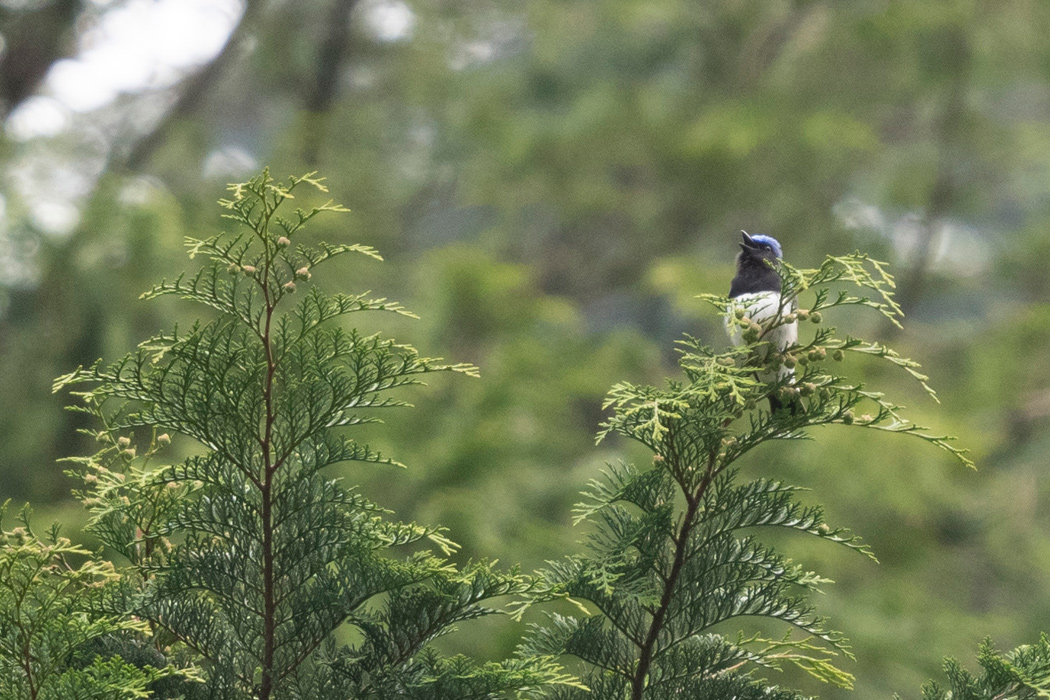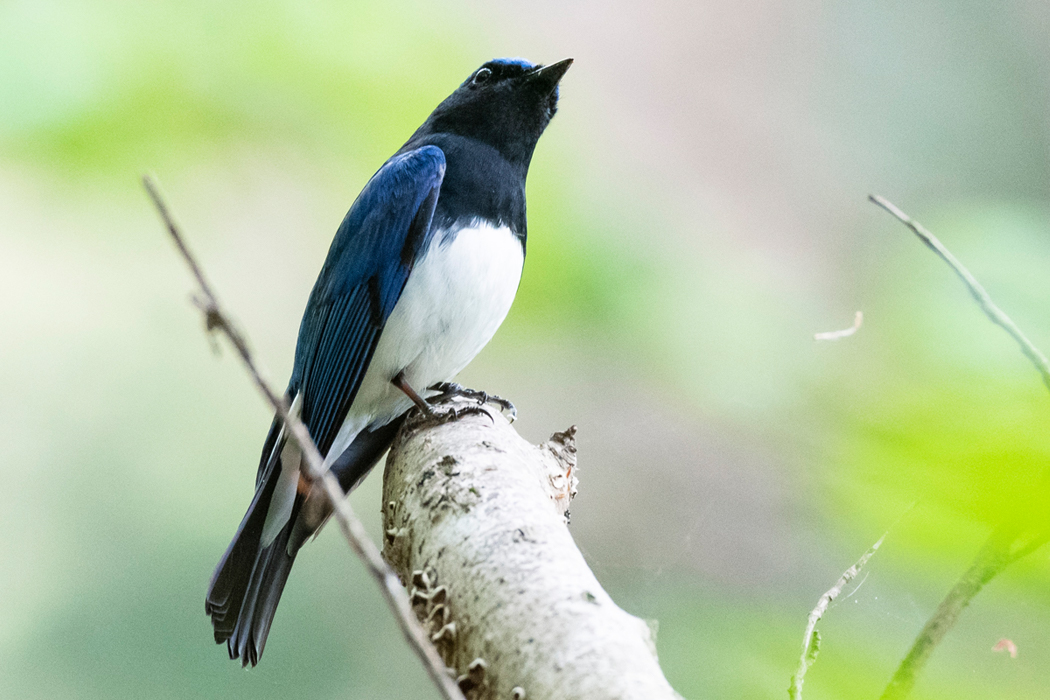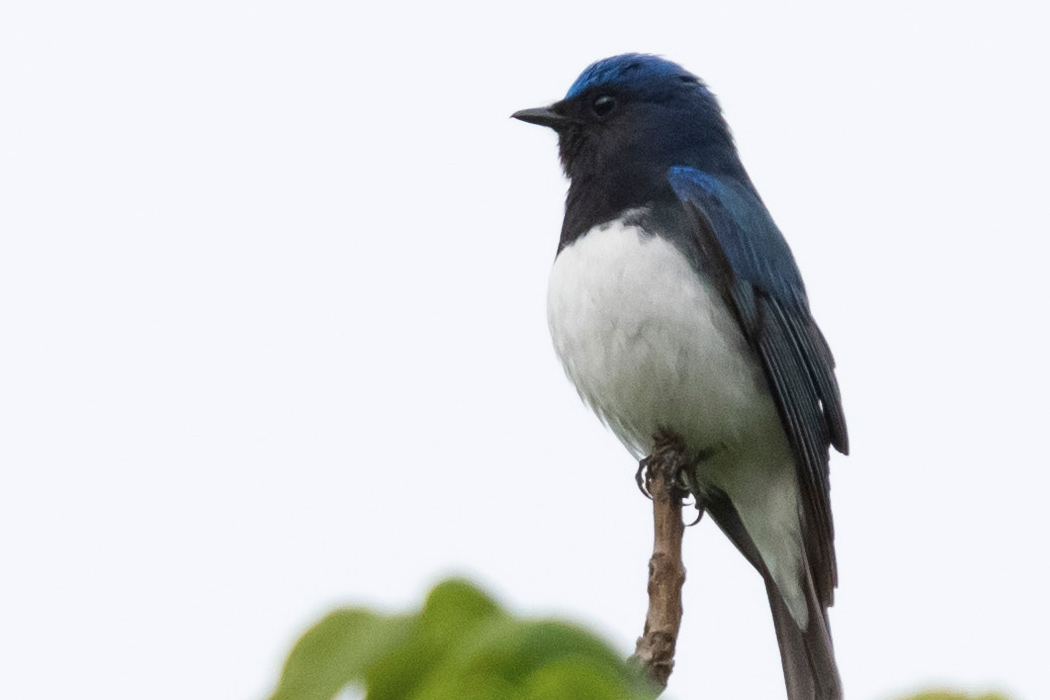
Blue-and-White Flycatcher
A kind of blue bird that represents Japan with beautiful twitter.
| Scientific name | Cyanoptila cyanomelana |
| English name | Blue-and-White Flycatcher |
| Japanese name | 大瑠璃 |
| Classification | Aves |
| Classification details | Passeriformes Muscicapidae |
| Full length | 16cm |
| Distribution | East Asia including Japan. In winter, it migrates to the Indochina Peninsula and overwinters. In Japan, it is found outside the Nansei Islands. |
Characteristics
A bird of the Flycatcher family with a beautiful male blue. The male has a beautiful blue back from the head to the tail. The area from the eyes to the neck is black and the belly is white. Females have a plain brown color throughout their body.
Along with the red-flanked bluetail and the siberian blue robin, it is called the "Rurisancho" (three kinds of blue birds), and it is also counted as one of the three Japanese songbirds because of its beautiful song.
Calls
The blue-and-white flycatcher is also known as a beautifully singing bird.
A loud and clear voice, "Pilly Lee," is sung on the treetops. At the end of the song, the voices of "jiji" and "chichi" may be added.
Listen
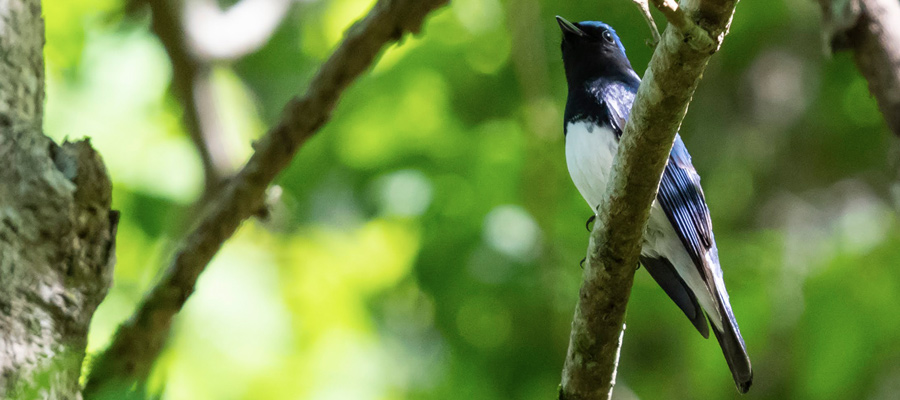
Ecology
It prefers forests along low mountain torrents. Catches flying insects as bait. Breeding males sing on treetops with good visibility. When singing, the male has the impression that if there is no noise, he will continue to sing without worrying too much even if he is observing. Nests are built on rock walls along rivers to breed.
Habitat
In the early morning, I took a picture of singing in a forest in Hachioji, Tokyo. There seems to be a favorite treetop on the tree on the slope facing the swamp, and he stayed in the same place for a while.
The blue-and-white flycatcher makes a loud noise, so it is easy to see where he is from a distance, but since he often sings near the treetops, it is better to devise a place to observe. If you can find it near the bridge over the mountain stream, you can observe it slowly.
Pictures
Introducing a picture of Blue-and-White Flycatcher.

Picture book

---
looks more light blue than white dragonfly......ead more.
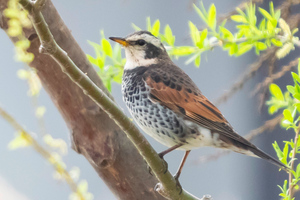
Natumann's Thrush
Walks or stops on the ground.......ead more.

Common Pheasant
The national bird of Japan that is familiar to Momotaro.......ead more.

Red stingray
It has poisonous spines on its tail.......ead more.
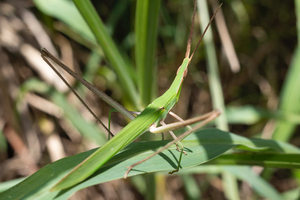
Oriental longheaded locust
Its long, slender body helps it camouflage itself with the surrounding leaves.......ead more.
